concrete
Latest
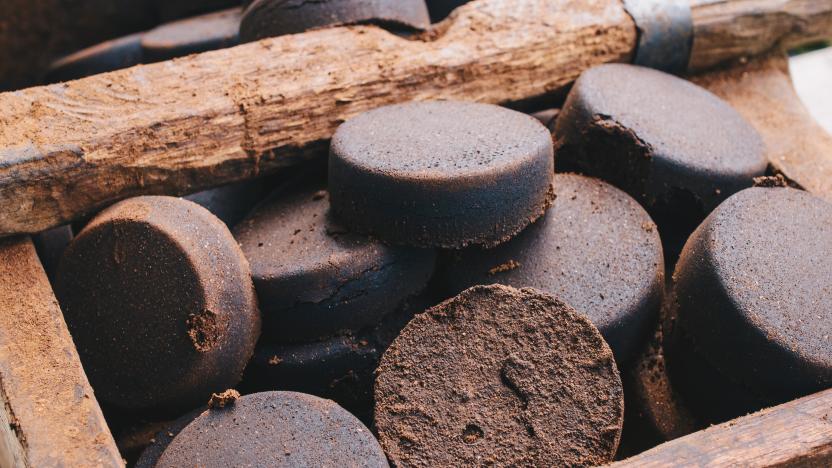
Scientists strengthen concrete by 30 percent with used coffee grounds
Researchers in Australia have found a new use for old coffee grounds: concrete doping!

Meta's newest AI discovers stronger and greener concrete formulas
A team from Meta AI, working with researchers at The University of Illinois, Urban-Champaign, have created an AI that can devise and refine formulas for increasingly high-strength, low-carbon concrete.
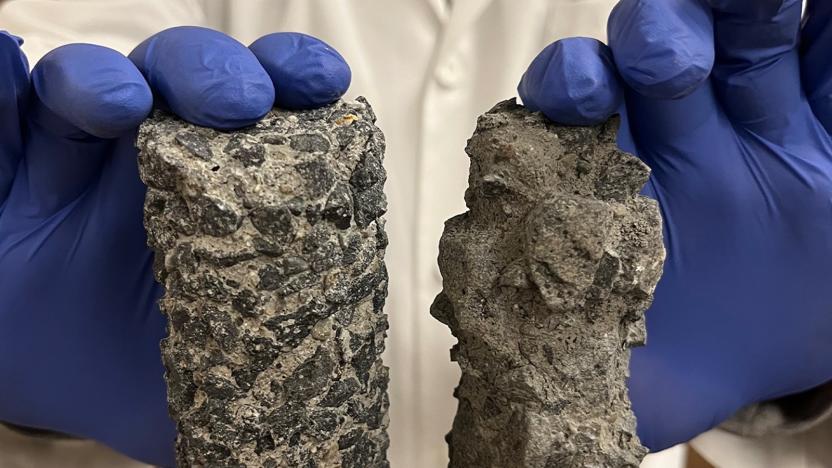
Sealants made from nanomaterials could make concrete more durable
A team of researchers from Washington State University believes nanomaterials like graphene oxide could help harden concrete infrastructure against the elements.
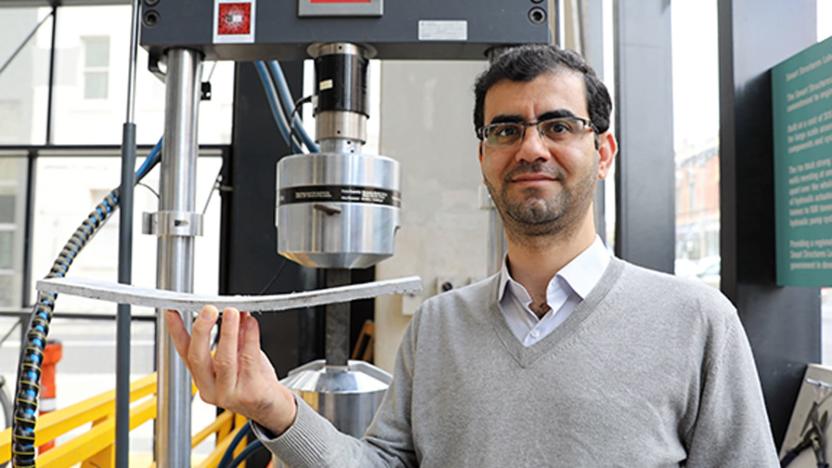
Scientists create bendable concrete that could better withstand earthquakes
Scientists at the Swinburne University of Technology in Melbourne have developed a new process that could one day allow bendable concrete to go mainstream. It could also lower the carbon footprint associated with making the building material.
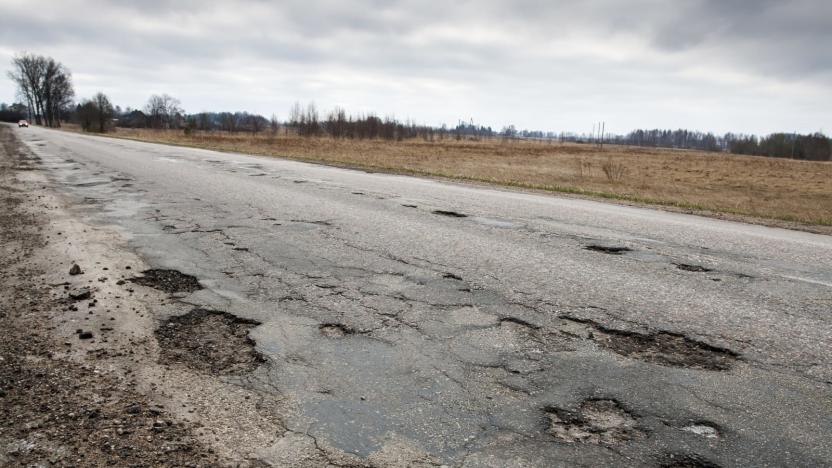
LSU's bendable concrete could fix America's crumbling infrastructure
America's infrastructure is crumbling around us. The American Society of Civil Engineers' latest Infrastructure Report Card, from 2017, rated the nation's roads, bridges, airports and water systems at a paltry D+ -- the same grade received four years prior when the report card was last issued. However, recent advances in a novel form of concrete could help us rebuild our roadways to be stronger and more resilient than ever before.
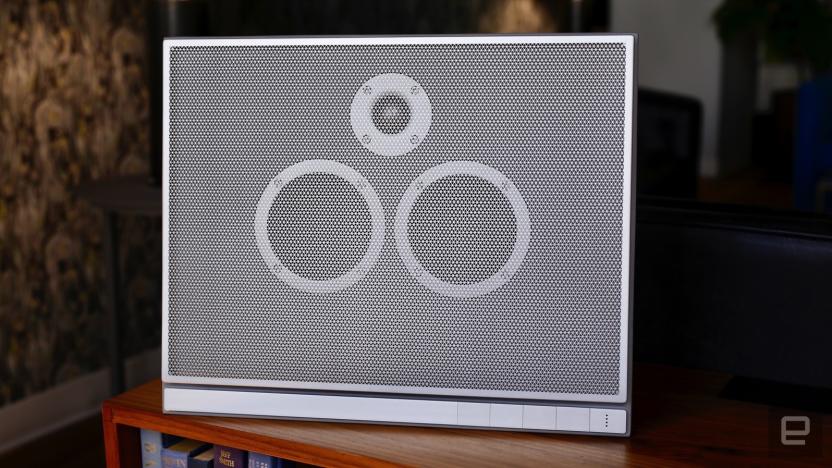
Master & Dynamic’s concrete speaker is equal parts sound and spectacle
If you're a fan of well-designed headphones that have a unique aesthetic, Master & Dynamic should be at the top of your list. The company has been pairing colored leather and metal accents for years now, creating some of the best looking audio accessories available. Earlier this year, the company ventured into another product category: wireless speakers. In true M&D fashion, it didn't cut corners on design, materials or sound and even opted to make its first model out of concrete. Sure, it's been done before, but concrete speakers are still a novelty. It looks great and, as I discovered after spending several weeks with one, the MA770 is more than capable when it comes to audio quality. But, it's not for everyone.
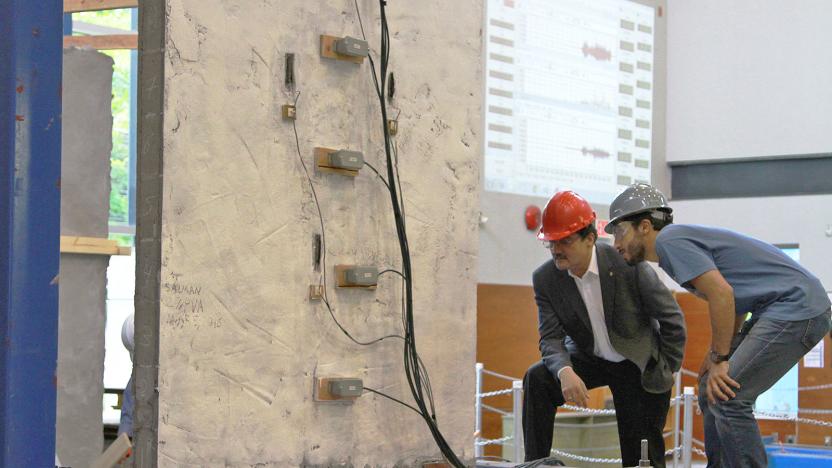
Eco-friendly concrete protects old buildings from earthquakes
Concrete has become the high-rise building material of choice because it's relatively cheap, easy to work with, long-lasting, and highly resistant to fire or explosions, unlike steel. It does have one inherent flaw, though: It's not great under tensile loads, so it requires heavy steel reinforcement to resist earthquakes. However, researchers from the University of British Columbia (UBC) have developed a new type of concrete with steel-like properties that can resist powerful quakes and is eco-friendly, to boot.

A 3D-printed bridge is being built using reinforced concrete
3D printing is a massive category that covers everything from small, DIY, plastic projects to metal meant to be used in Boeing's 787 airplane. Yet another usage has come to light, courtesy of the Eindhoven University of Technology in the Netherlands. Researchers there have started manufacturing parts for a 3D-print reinforced concrete meant for a cycling bridge. When the construction is complete, it'll apparently be the first bridge to use 3D-printed, reinforced concrete (but not the first 3D printed bridge using other materials -- or even concrete itself. (The image above shows a 3D-printed concrete test done at the Nanyang Technological University in Singapore; the one below comes from the Eindhoven University of Technology.)

Master and Dynamic developed its own concrete for its first speaker
When a company moves into a new product category, it's important to make a statement with that first device. Master & Dynamic has been designing some of the best-looking headphones you can buy for just under three years; today it's introducing its first speaker, the MA770. This isn't just any wireless speaker, though. Rather than using wood, plastic or metal for the primary material on the MA770, Master & Dynamic chose concrete. That decision led the company to develop its own composite and collaborate with world-renowned architect Sir David Adjaye on the design.

Researchers make concrete production carbon neutral
Concrete is not just the key to our built future, but a principal reason as to why we won't live to see the utopia it creates. After all, production of the building material contributes around five percent of the planet's total CO2 emissions. Thankfully, Professor Stuart Licht, the scientist who's already worked out a way to save us from disaster, may have developed the solution.

ICYMI: Segway's plan B and flexible concrete
try{document.getElementById("aol-cms-player-2").style.display="none";}catch(e){}Today on In Case You Missed It: Segway came to Intel's Developer's Forum to show a prototype for a self-balancing scooter that is also a robot. If the public SDK works out well, Segway hopes to release a consumer version of whatever it becomes in 2017.

Scientists want to make buildings from bone
A cityscape made of bone and eggshell might sound like the set for the final act of some big-budget fantasy epic, but the idea could help support ever-growing populations in our cities -- and reduce carbon emissions in the process. According the University of Cambridge, typical materials like concrete and steel make up almost 10 percent of global carbon emissions. Before they even get to the place of construction, both materials need high temperatures to be processed, and thus a whole load of energy. Researchers are hoping that artificial bone and eggshell, made of protein and minerals, could one day stand in for traditional building materials.

ICYMI: Pollution concrete, EV wireless charging and more
#fivemin-widget-blogsmith-image-431877{display:none;} .cke_show_borders #fivemin-widget-blogsmith-image-431877, #postcontentcontainer #fivemin-widget-blogsmith-image-431877{width:570px;display:block;} try{document.getElementById("fivemin-widget-blogsmith-image-431877").style.display="none";}catch(e){} Today on In Case You Missed It: Scientists at UCLA have made concrete by first extracting greenhouse gases from power plant smokestacks. An EV prototype to wirelessly charge cars is making the rounds, and the group's big plan is to design a 50 kilowatt charger that can juice up cars as they drive. You could put that future charger inside your garage where a new opener comes with extra modules that can detect obstacles and about 10 other things. Finally, we were tickled by the idea of a robot that can best you at Settlers of Catan, so please check that out. As always, please share any great tech or science videos you find by using the #ICYMI hashtag on Twitter for @mskerryd.

ICYMI: Self-warming concrete, underwater robot and more
#fivemin-widget-blogsmith-image-692596{display:none;} .cke_show_borders #fivemin-widget-blogsmith-image-692596, #postcontentcontainer #fivemin-widget-blogsmith-image-692596{width:570px;display:block;} try{document.getElementById("fivemin-widget-blogsmith-image-692596").style.display="none";}catch(e){}Today on In Case You Missed It: Curling up with a fireplace and a bottle of whiskey is now a little less depressing, now that we know self-heating concrete is on the way. Still a research project in Nebraska, conductive concrete can operate on a low amount of electric current and de-ice itself. It's just what we've needed.

Scientists find a way to make concrete on Mars
If humans are ever going to have a long-term presence on Mars, they'll need to make their own buildings -- they can't count on timely shipments from Earth. But how do they do that when the resources they have will share little in common with what they knew back home? Northwestern University researchers have an idea. They've developed a concrete that uses Mars' native materials. You only have to heat sulphur until it melts, mix it with an equal part of Martian soil and let it cool. The finished concrete is very strong, easy to work with and recyclable -- you just have to reheat it to get some building supplies back.

Engineer creates functional concrete 'Satisfaction' record
German engineer Ricardo Kocadag has developed what he claims is the "first concrete record," built from a high-performance concrete developed for high-rise buildings and bridges. The idea was not to dramatically increase the weight of your music collection, but rather to show that the load-supporting material can also be finely finished and detailed. A type of "ultra high-performance concrete," or UHPC, it's often used on unusually-shaped, detailed structures like the Fondation Louis Vuitton in Paris.

Minnesota man building a 3D printer to construct houses
It's the dream of many to build their own home, but financial, temporal and technical limitations mean that few of us ever do. At least, that's the situation right now. An inventor from Minnesota is currently trying to build an enormous 3D printer that'd do for housebuilding what the technology has already done for small colored plastic widgets. Andrey Rudenko is currently working on hardware that'll help him build his next home, but that could also be sold to contractors for "the cost of a car." Admittedly, we don't know what sort of whip is in Rudenko's driveway, but presumably that's a small price to pay for the control on offer.

Alt-week 11.03.12: zombie animals, martian methane and self healing buildings
Alt-week peels back the covers on some of the more curious sci-tech stories from the last seven days. After a week where large numbers of people found themselves at the mercy of mother nature, many will be reminded just how vulnerable we really can be at times. That said, science still provides us with a pretty big stick to whack many other problems with. After the break we look at how crumbling buildings could soon be self-healing, why some UK-based scientists think they are one step closer to answering the "is light made of waves or particles" quandary, and NASA reveals its latest results in the hunt for martian methane. Oh, and there's some zombie animals too. This is alt-week.

Concrete USB drives are worth their weight in gigabytes
Sure, a USB drive made of concrete might be a good enough idea on its own, but designer Shu-Chun Hsiao apparently doesn't settle for merely "good ideas," hence this so-called Memory Weights concept. Yes, it is indeed a USB drive made of concrete, but Shu-Chun takes things one step further by actually having the weight of the drive indicate its capacity -- 128g equals 128GB, and so on. Unfortunately, it is still just a concept, but reality is just a concrete mold away. Remember that, kids.

Horus coffee table/iPod dock will make friends question your sanity
Hey, you know that whole Silent Hill design theme you've been aiming for, with the faceless nurse mannequins scattered about and the constantly running fog machine? We think we've found a coffee table for you. It's (naturally) called the Horus and its made of "ultra-high performance concrete," offering a spot for you to dock your iPod or iPhone on top, a pair of speakers down below, and an illuminated glass plane bisecting the thing. It's the creation of designer Stephane Thivend and, while it doesn't appear to be available in red nor does it come with a giant sword, it would certainly serve as a visual symbol of your guilt over spending so much on high-concept furniture. %Gallery-91897%











